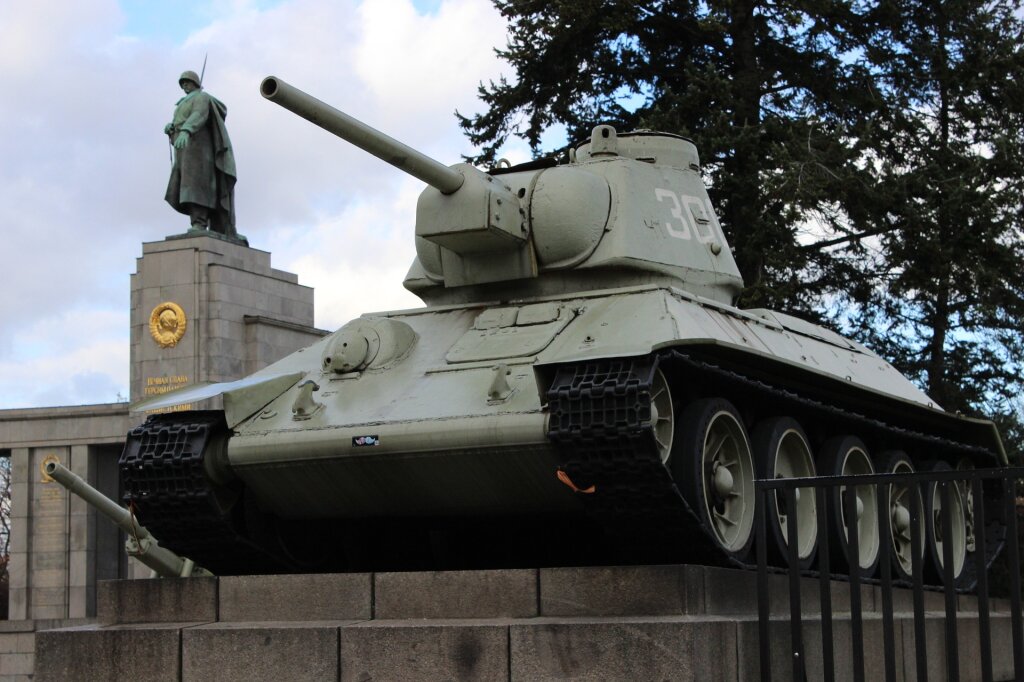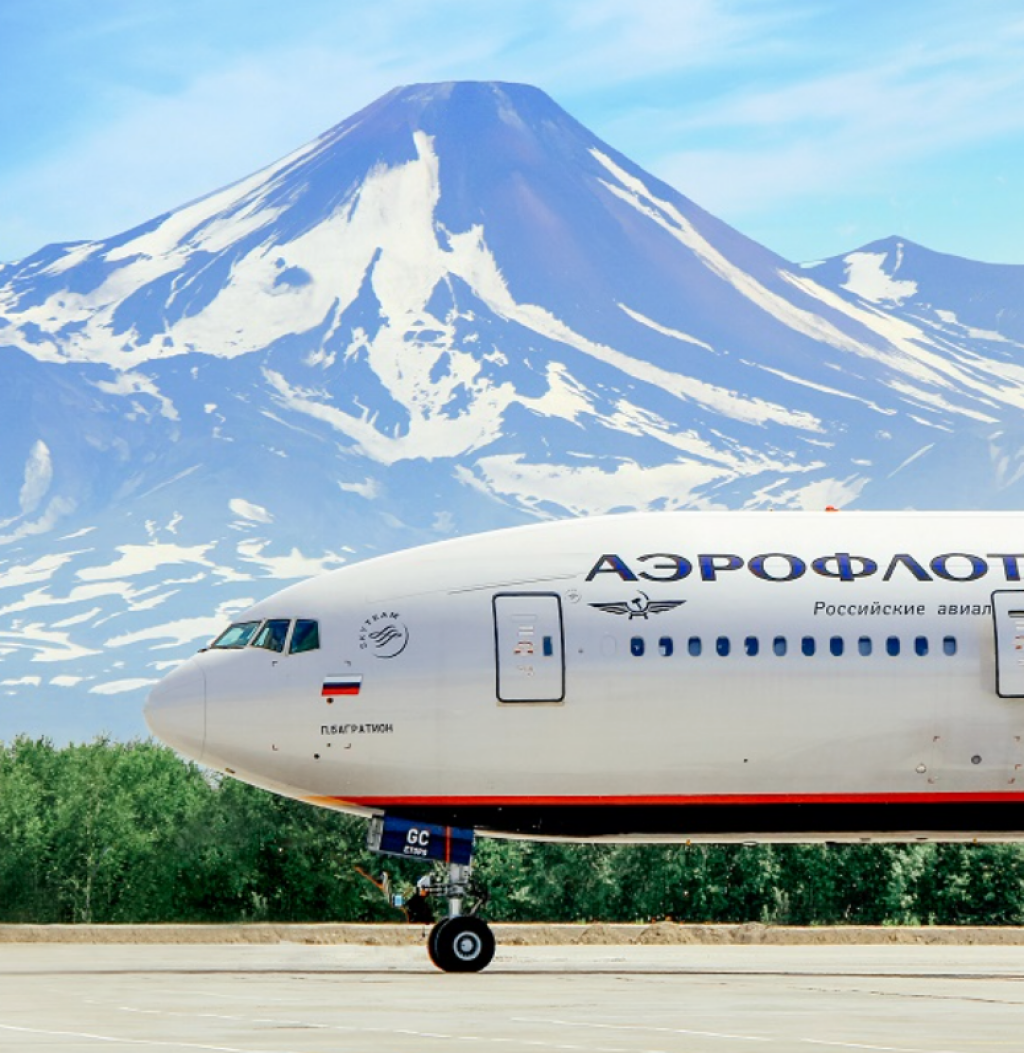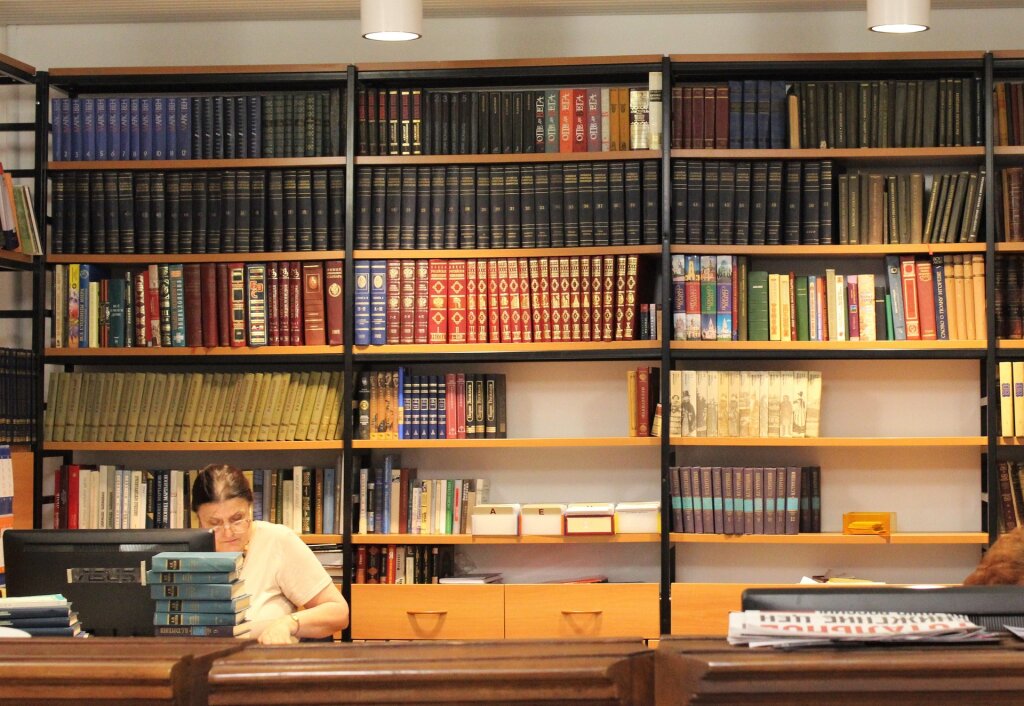We at the Jordan Center stand with all the people of Ukraine, Russia, and the rest of the world who oppose the Russian invasion of Ukraine. See our statement here.
Brandon Schechter is author of The Stuff of Soldiers (Cornell, 2019).
Claiming that a country whose head of state is a Jew with relatives who died in the Holocaust is “neo-Nazi” is absurd. Yet for many Russians, this claim could sound credible, because “Nazism” and the more commonly used “fascism” carry a different set of associations than for most people in Western Europe and North America. In addition, Soviet and Russian understandings of fascism and Nazism’s essence have made it easy to use the terms to describe contemporary enemies in Russia. While the Holocaust or Shoah — the systematic murder of Europe’s Jews by the Third Reich and its collaborators —is the central Nazi crime remembered in “the West,” in Russia and much of the former “Second World,” the special victimhood of Jews tends to be elided.
Soviet people seldom used the term “Nazi," in part because the Communist Party wanted to distance its project from the National Socialist Third Reich. Instead, “fascist” was the operative term from the 1930s until the Soviet collapse. The Soviet leadership, comprised of dedicated Marxists, believed that capitalism would inevitably lead to imperialism, as the competition for new markets forced capitalist states to expand violently — at first into colonies, then into Europe itself.
When the Russian Empire collapsed during the First World War — or "the Imperialist War," as the Soviets called it — and the Bolsheviks seized power in October 1917, they thought and hoped that their revolution would go global. When it didn’t, they were convinced that, war being inherent to capitalism, another major conflict was inevitable. The Bolshevik leadership was quick to recognize the danger that Hitler’s rise to power posed to the world, identifying fascism as simply the logical conclusion of capitalism — pure imperialism without the veneer of liberalism and participatory democracy.
At the same time, the Bolsheviks feared an attack by any imperialist state, including the British and Japanese. To prepare the Soviet Union for war with whichever imperialist power would strike, Stalin and the Party went to extreme measures. These included crash industrialization funded by mass expropriation that led to a man-made famine with millions of victims, and a massive terror campaign to purge the country of potential fifth-columnists, killing hundreds of thousands of people (including much of the military’s top brass).
Just before the Second World War, Bolshevik leadership couldn’t come to a collective security agreement with France and England. After the Munich Agreement in 1938, Stalin decided that the Soviet Union should deflect fascist belligerence away from itself. The result was the signing a non-aggression pact with the Third Reich that shocked the world, provided the fascist war machine with much-needed resources, and allowed Hitler to invade Poland and thus begin the war in Europe. The Soviet Union invaded Poland, Finland, and annexed the Baltic States of Estonia, Latvia, and Lithuania, expanding its borders. (Finland maintained its independence, but ceded territory.) Within two years, the Nazis had violated this non-aggression pact, invading the Soviet Union on June 22, 1941.
The Third Reich’s invasion was an existential threat to the Soviet regime and its people. Fascist plans went beyond politics, since the Nazis viewed themselves as fighting a race war against Jews, whom they identified with communism, as well as Slavs, whom they considered racial inferiors to be enslaved or exterminated. Using the settlement of the American West as a model, Hitler wanted to turn Ukraine into a “German California” and clear the space of the Soviet Union of its indigenous inhabitants for settlement by Aryans. German plans called for hunger to be used as a weapon to kill an estimated 30 million people by 1942, specifically targeting the urban population of the Soviet Union and cutting resources to anyone not directly servicing the Wehrmacht.
The fascists ruled via terror and naked force, but it was not until a successful Soviet counteroffensive that liberated several villages and cities in late 1941 that the true wages of German rule were made plain. Red Army soldiers found villages and cities devastated by a fascist enemy that did not see Soviet people as fully human. Homes, farms, factories, and cultural sites were destroyed. Women, children, and the elderly were murdered or left to starve to death, prisoners of war burned alive.
Soldiers bore witness, vowing to avenge the enemy, and the Soviet state collected evidence for what would become the Nuremberg Trials. By collecting and presenting evidence, the Soviets not only convinced often reluctant soldiers of the need to fight, but also galvanized doubtful allies (many of whom saw the Third Reich and Soviet Union as equally dangerous) of both the sinister nature of the enemy and the massive sacrifices being made by the Soviet people. Indeed, over the course of the war, 20-28 million Soviet citizens would die, the majority of them civilians.
The official Soviet narrative of a genocidal enemy who came to conquer and destroy, while certainly true, had no place for one group suffering more than another — with the possible exception of ethnic Russians, whom the regime increasingly framed as the "default" Soviet people. There was no place for the Holocaust in this story. The Nazis prioritized the destruction of Soviet Jews from the beginning of the war and continued the Final Solution until the war’s final months. Meanwhile, changing fortunes at the front forced the Germans to partially retreat from wholesale slaughter of other Soviet peoples, some of whom the Nazis used as slave laborers while opening the door to collaboration by others. Jews murdered in the Shoah as a racial category were counted as just millions more anonymous, “peaceful Soviet citizens.” When Red Army soldiers liberated concentration camps in the last years of the war, they did so after seeing thousands of destroyed Russian, Belorussian, and Ukrainian villages and cities and often interpreted the camps as spaces designed to persecute and exterminate “anti-fascists” rather than Jews.
The Soviet Union was certainly not alone in downplaying Jewish victimhood (particularly before 1945), but a rising consciousness of the Shoah marked European and North American understandings in the decades after the conflict. This shift did not occur in the socialist world. When people in Soviet-bloc states imagined the horrors of fascism, they saw an enemy who hated, enslaved, and murdered non-Aryans more or less equally; a secondary image was that of collaborators who aided in this destruction in the name of nationalism or simply to save their own skins.
Here, Ukrainians played an interesting dual role. As the second largest nationality in the Soviet Union, Ukrainian soldiers and partisans were vital to the war effort, and fascist barbarity in Ukraine was clear evidence of the Nazis' evil intentions. However, Ukrainian nationalist partisans — many of whom participated in genocide, collaborated with the Germans, and waged an insurgency for years after the war — haunted the imagination of their victims and the Soviet leadership.
While fascism was often marked as "German" during the war — “Germano-fascist invaders” being the standard descriptor — postwar realities and a return to Marxist orthodoxy shifted the narrative back to fascism as the natural end point of capitalism. Cold War propaganda posited the US and NATO as the inheritors of Hitler’s program of bellicose world domination, as opposed to communists who understood war’s devastation and sought peace. The Great Patriotic War — the Soviet and later Russian designation of the Soviet-German front — was described as the Soviet Union’s gift to the world, defeating fascism with minimal help from the Allies.
With the collapse of the Soviet Union, the Marxist framework fell away, but the war continued to be of prime importance in official Russian culture. Recently, Putin and his inner-circle have shifted from “fascist” to “Nazi” in their rhetoric, claiming that the more familiar international phrasing will find sympathy among foreign interlocutors. This new rhetoric marks a shift away from the universalist implications of a battle between communism and fascism to a civilizational conflict between particular, nationally-identifiable societies. It is oddly similar to how the Nazis themselves imagined the war: as a conflict between civilizations that could be defined by blood, rather than political systems. This framing elides the multi-national nature of the Soviet Union, mentioning the participation of non-Russians to the Soviet war effort only when convenient. “Soviet” and “Russian” become largely synonymous, an interpretation that can be traced back to the eve of the war and which reached its apex in Stalin’s 1945 toast honoring the “Great Russian people.”
Post-Soviet discussions of the war sometimes emphasized the pan-European nature of the conflict, recalling that Hitler recruited soldiers from conquered Western European territories as well as newly annexed Soviet territories. Rather than understanding fascism or Nazism as a natural outgrowth of capitalism, recent interpretations increasingly cast it as the clearest expression of an eternal “Western” hatred of Russia as a unique civilization. This idea dates back to nineteenth-century debates between Slavophiles and Westernizers about Russia’s place in the world and the Eurasianists of the twentieth century. Examples of “the West's” alleged ill-will toward Russia include medieval invaders; Napoleon’s conquest, the original Patriotic War in which Russia was attacked by a cosmopolitan European force bent on remaking the world; and “the West’s” embrace of Soviet dissidents. Russian nationalists see liberalism, in particular, as a Trojan horse meant to rot Russia from within, an alien ideology masking a Nazi core.
In the 1990s and early 2000s, such a position was marginal. However, by 2012, Karen Shaknazarov, the General Director of Mosfilm, Russia’s largest film studio, released the blockbuster film White Tiger, which featured the battle between a Soviet soldier risen from the dead and a demonic German tank. The film ends with a warning that the beast vanquished in 1945 will inevitably return; in its final minutes, Hitler declares that “we simply found the courage to carry out what Europe dreamed of doing […] Didn’t we bring about the secret dream of every European citizen?” Though this monologue makes passing reference to the Holocaust, it’s clear that the next Hitler will have his sights firmly set on Russia.
Loose talk about fascism, Nazism, and potential "fifth columnists" accompanied suppression of the opposition throughout the 2010s. The St. George’s Ribbon, distributed on the eve of Victory Day since the mid-2000s, transformed from a symbol of pride in the 1945 victory over fascism into a sign of solidarity with the current government. This change in meaning began when it was used as an alternative to the white ribbons demonstrators wore when they protested the massive falsification in the 2011-12 Duma elections.
Eventually, St. George’s Ribbons became the distinguishing symbol of the military forces of the self-proclaimed "people's republics" of Donetsk and Luhansk, and are widely used by civilians throughout Russia as a sign of support for Putin. Recent days have seen the incorporation of the St. George's ribbon into symbology based on the letter "Z," which supporters of Russia's aggression in Ukraine have taken to brandishing.
Putin’s state positioned itself as the inheritor of victory over fascism, and anyone who would challenge the status quo as a potential collaborator with Nazism. Historians who questioned cherished war myths have already faced potential jail time for “falsifying history”; now journalists or ordinary citizens must fear the same for disseminating so-called “fakes” in the press or on social media. The term "fake" refers to criticism of the government’s war and even the use of the term "war" itself to describe the invasion of Ukraine.
Putin has made his dedication to a certain memory of and interpretation of the war a centerpiece of his domestic and international politics, going so far as to start a war based on a particular reading of history and understanding of Nazism. In the eyes of Putin and his government, Russians are the primary victim of an insidious Western menace marked by a pathological and ahistorical hatred of a civilization "the West" simply cannot understand. This geopolitical vision has produced an irredentism eerily reminiscent of the Nazi slogan “blood is our frontier” — the claim that the Third Reich should expand to include any territory containing a German diaspora.
In Putin’s view, the “Russian World” extends to any place where Russian is spoken. This position, along with the absurd claim that Zelensky, a Russian-speaking Jew, stands at the head of a neo-Nazi state, are among the sad ironies of our age and terrifying examples of the misuse of history. Putin’s cynical mobilization of the actual suffering of people who experienced the Second World War — an event of enormous scale in which the diverse Soviet peoples came together to defeat real fascism at enormous cost, and an event with which most Russians sincerely identify — can only be described as a travesty. The man who claims to be protecting the world from Nazis has in essence himself become a fascist, while cheapening the true horror associated with the words “fascism” and “Nazism.”



